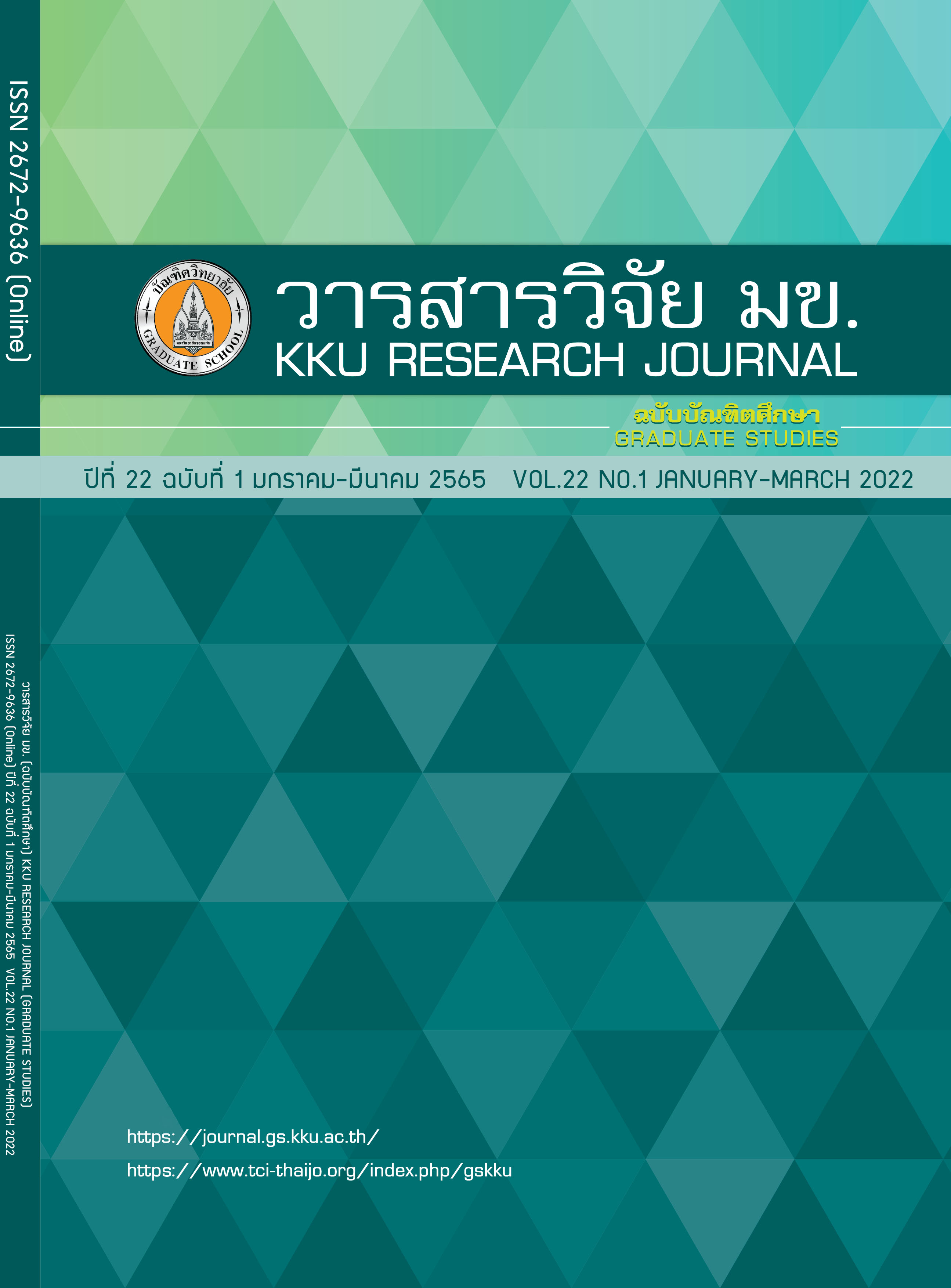Comparative Study Between Scapular Stabilization Exercise and General Exercise on Pain Reduction in Patients with Scapulocostal Syndrome: A Randomized Clinical Trial
Keywords:
Scapulocostal syndrome, Scapular stabilization exercise, Pain levelAbstract
This current study was an assessor-blind randomized controlled trial which was to compare the effect between scapular stabilization exercise and general exercise on alteration of pain intensity and pain pressure threshold. Thirty-eight patients with the scapulocostal syndrome (male=8, female=30) were randomly divided into 2 groups. Participants in both groups were treated by hot pack, and ultrasound similarly, except type of exercise within 4 weeks (12 sessions) and 2 weeks follow up. Scapular stabilization exercise and general exercise were no significant difference to decrease pain intensity (p> 0.05). However, scapular stabilization exercise can increase pain pressure threshold significantly difference within group (p< 0.05), and could be an effective intervention more than general exercise.
References
Abrams B, Goodman S. Scapulocostal syndrome. In: Waldman, S.D. (Ed.), Pain Management. 2007; 1. Saunders, Philadelphia.
Cohen CA. Scapulocostal syndrome: diagnosis and treatment. South. Med. J. 1980; 73: 433-434.
Guszkowska M. Effects of exercise on anxiety, depression and mood. Psychiatr. Pol. 2004; 38: 611-620.
Fisher P, Durham R. Recovery rates in generalized anxiety disorder following psychological therapy: an analysis of clinically significant change in the STAI-T across outcome studies since 1990. Psychol. Med.1999; 29: 1425-1434.
Simons DG. Understanding effective treatment of myofascial trigger points. J. Bodyw. Mov. Ther. 2002; 6: 81-88.
Zhuang X, Tan S, Huang Q. Understanding of myofascial trigger points. Chin Med J. 2014;127: 4271–4277.
Rabbitts JA, Holley AL, Karlson CW, Palermo TM. Bidirectional associations between pain and physical activity in adolescents. Clin J Pain. 2014; 30 (3): 251–258.
Buttagat V, Taepa N, Suwannived N, Rattanachan N. Effects of scapular stabilization exercise on pain related parameters in patients with scapulocostal syndrome: a randomized controlled trial. J Bodyw Mov Ther. 2016; 20: 115–122.
Gallagher EJ, Bijur PE, Latimer C, Silver W. Reliability and validity of a visual analog scale for acute abdominal pain in the ED. Am. J. Emerg. Med. 2002; 20: 287-290.
Kulsawad N, Meema P, Chatchawan U, Hunsawong T, Eungpinichpong W. Validity and reliability of
digital we algometer in subjects with myofascial trigger points on trapezius muscle. Archives. 2019; 31(2): 122-129.
Mata Diz JB, de Souza JR, Leopoldino AA, Oliveira VC. Exercise, especially combined stretching and strengthening exercise, reduces myofascial pain: a systematic review. J. Physiother. 2017 Jan; 63(1): 17-22. DOI: 10.1016/j. jphys. 2016.11.008.
Esenyel M, Caglar N, Aldemir T. Treatment of myofascial pain. Am. J. Phys. Med. Rehab. 2000; 79: 48-52.
Mata Diz JB, de Souza JR, Leopoldino AA, Oliveira VC. Exercise, especially combined stretching and strengthening exercise, reduces myofascial pain: a systematic review. J Physiother. 2017; 63(1): 17-22. doi: 10.1016/j.jphys. 2016.11.008.
Nongharnpitak S, Arayawichanon P, Chatchawan U, Mato L, Puangmali A, Boonprakob Y. Comparative study of the immediate therapeutic effects between modified active release technique and traditional Thai massage on pain alteration in patient with scapulocostal syndrome. JAMS [Internet]. 2017; 50 (3): 391.
Baskurt Z, Baskurt F, Gelecek N, Ozkan MH. The effectiveness of scapular stabilization exercise in the patients with subacromial impingement syndrome. J. Back Musculoskelet. Rehab. 2011; 24: 173-179.
Pacheco-Barrios K, Carolyna Gianlorenço A, Machado R, et al. Exercise-induced pain threshold modulation in healthy subjects: a systematic review and meta-analysis. Princ Pract Clin Res. 2020; 6(3): 11-28. doi: 10.21801/ppcrj. 2020. 63.2
Alizadeh MH, Daneshmandi H, Shademan B, Ahmadizad S. The effects of exercise training on scapula position of muscle activity measured by EMG. World J. Sport Sci. 2009; 2: 48-52.
Garfin SR, Tipton CM, Mubarak SJ, Woo SL. Hargens AR, Akeson WH. Role of fascia in maintenance of muscle tension and pressure. J. Appl. Physiol. Respir. Environ. Exerc.Physiol. 1981; 51: 317-320.
Park SI, Choi YK, Lee JH, Kim YM. Effects of shoulder stabilization exercise on pain and functional recovery of shoulder impingement syndrome patients. J. Phys. Ther. Sci. 2013; 25: 1359-1362.
Gerwin RD. Classification, epidemiology, and natural history of myofascial pain syndrome. Curr Pain Headache Rep. 2001; 5: 412–420.
Downloads
Published
Issue
Section
License
Copyright (c) 2022 KKU Research Journal (Graduate Studies)

This work is licensed under a Creative Commons Attribution-NonCommercial-NoDerivatives 4.0 International License.



